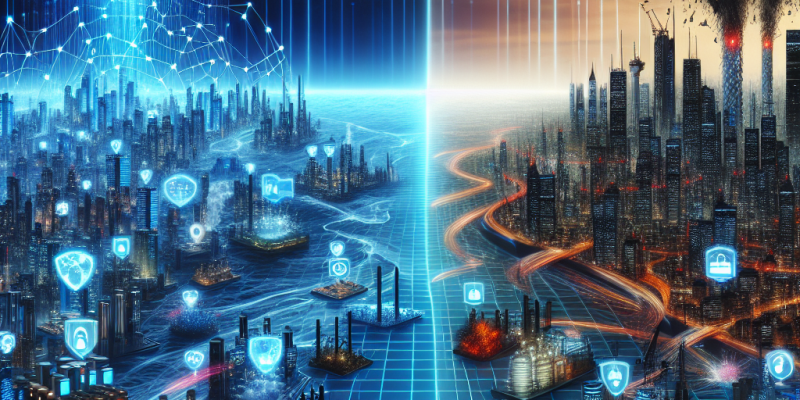The Ripple Effect: How Ransomware Attacks Disrupted Industries in 2025

The Ripple Effect: How Ransomware Attacks Disrupted Industries in 2025
In recent years, ransomware attacks have become a major threat to businesses and organizations worldwide. In 2025, the ripple effect of these cyberattacks has disrupted various industries, leading to significant consequences. Let’s explore how these attacks have changed the business landscape this year.
What is Ransomware?
Ransomware is a type of malicious software that locks users out of their systems or encrypts their data. The attackers demand a ransom—usually in cryptocurrency— to unlock the files. These attacks can target anyone, from small businesses to large government institutions.
The Rise of Ransomware in 2025
In 2025, ransomware attacks have increased at an alarming rate. According to recent reports, companies across various sectors have faced hundreds of attacks monthly. Healthcare, finance, and education are among the most affected industries.
The Healthcare Industry
The healthcare sector has experienced severe disruptions due to ransomware. Hospitals and clinics have been targeted, leading to delays in patient care and loss of sensitive data. For instance, several hospitals had to cancel non-emergency surgeries and appointments, putting patients at risk. Cybersecurity experts warn that this could lead to longer recovery times and increased patient anxiety.
The Financial Sector
Ransomware has also hit banks and financial institutions hard. In 2025, several banks reported that their systems were compromised, causing temporary shutdowns of online services. Customers were unable to access their accounts, leading to frustration and fear about unsecured funds. This situation has resulted in a loss of trust in digital banking, prompting calls for stronger cybersecurity measures.
The Education System
Schools and universities have not been spared either. In 2025, many educational institutions fell victim to ransomware attacks, disrupting online learning and administrative functions. Students and teachers faced difficulties accessing resources and completing assignments. This disruption highlighted the need for better cybersecurity training and protection for educational institutions.
The Manufacturing Sector
The manufacturing industry has also felt the impact of ransomware attacks. In 2025, several factories were forced to stop production due to compromised systems. This not only affected their operations but also disrupted supply chains, leading to shortages in various products. As a result, companies are now looking to invest more in cybersecurity to prevent similar incidents in the future.
The Ripple Effect on Global Economy
The ripple effect of ransomware extends beyond individual companies. As businesses face financial losses and operational disruptions, the overall economy suffers. Experts predict that the cost associated with ransomware attacks could reach billions of dollars in 2025 alone. This includes not only the ransom payments but also reduced productivity, lost revenue, and costs for recovery.
Moving Forward: Prevention and Recovery
In the wake of these incidents, companies are now realizing the importance of strong cybersecurity. Many organizations are investing in advanced security systems and training for their employees to recognize phishing attempts and other threats. Additionally, creating backup systems and response plans is crucial to minimize the damage a ransomware attack can cause.
Conclusion
Ransomware attacks in 2025 have had a profound impact on various industries. From healthcare to finance and education, the disruptions highlight the urgent need for improved cybersecurity measures. As companies adapt to this evolving threat, they must prioritize safeguarding their systems to prevent future attacks. The ripple effect of ransomware serves as a wake-up call for every organization in today’s digital age.














